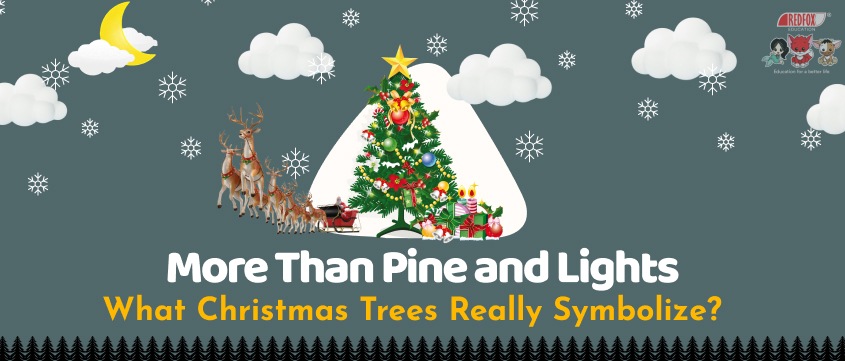The Christmas tree is one of the most cherished symbols of the festive season, standing tall in homes, town squares, and markets around the world. But have you ever wondered why we decorate Christmas trees? The tradition is steeped in history, spirituality, and cultural evolution, making it more than just a decorative element of Christmas.
The practice of decorating trees dates back centuries, long before the advent of Christmas as we know it. Ancient civilisations, such as the Egyptians and Druids, used evergreen plants to symbolise life and renewal during the winter solstice. For these cultures, evergreens represented resilience, hope, and eternal life during the cold and barren months. The modern Christmas tree tradition is widely believed to have originated in Germany in the 16th century. Devout Christians brought decorated trees into their homes, often adorning them with candles, nuts, and fruits. Martin Luther, the Protestant reformer, is credited with being the first to add lit candles to a tree, inspired by the twinkling stars through the branches of an evergreen.
As Christianity spread across Europe, the evergreen tree became associated with Christmas, symbolising eternal life through its ability to stay green all year round. The triangular shape of the tree was often interpreted as a representation of the Holy Trinity—Father, Son, and Holy Spirit. Ornaments added to the tree over time also carried religious significance. For example, stars represent the Star of Bethlehem that guided the Wise Men, angels symbolise the messengers who announced Jesus' birth, and lights reflect the light of Christ illuminating the world.
Decorating the Christmas tree has evolved into a family tradition that brings people together. For many, it is a time to pause from the hustle of daily life and bond over untangling strings of lights, hanging ornaments, and placing the tree topper. Each ornament often carries personal meaning, whether it’s a handmade decoration from childhood or a souvenir from a memorable holiday.
Today, Christmas trees are more than religious or cultural symbols—they represent joy, festivity, and creativity. People personalise their trees to reflect their tastes, from minimalist white and silver themes to bold and colourful displays. Some even forgo traditional evergreens for modern alternatives, like trees made from books or lights, demonstrating the adaptability of this age-old tradition.
The symbolism of the Christmas tree is as layered as its decorations. It is a reminder of life’s enduring spirit, the warmth of family and community, and the joy of giving and receiving. Whether viewed as a religious icon or a festive centrepiece, the Christmas tree continues to inspire wonder and connection, making it an integral part of the holiday season. So the next time you decorate your Christmas tree, take a moment to reflect on its rich history and the deeper meaning it carries. Every ornament, every light, and every branch is part of a story that transcends time and place—a story of hope, love, and unity.Get unlimited access to our Premium products with Red Fox Education's English courses, designed to give you the language skills and confidence needed to hold conversations in spoken English on a variety of topics.
If you still don't have the Red Fox Education mobile app download it.
Dec 20, 2024 | Vocabulary,British English,Festival | 1 comments











